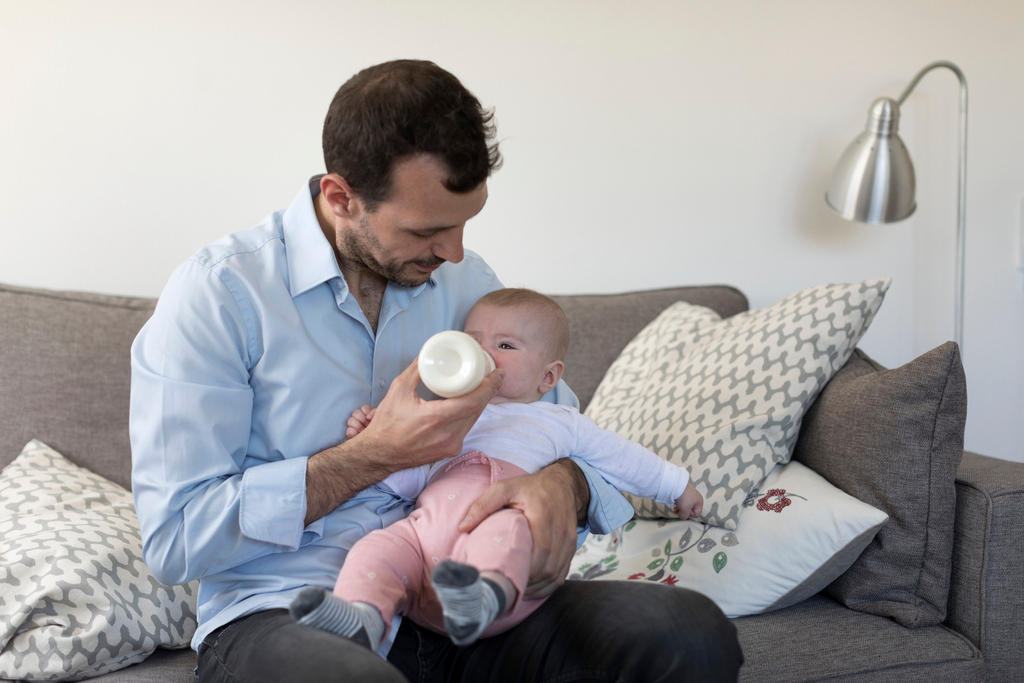The power and limitations of the women’s strike

The recent Swiss women’s strike made history as a mass demonstration. One reason for the unusually strong turnout was its decentralised nature. But what are the weaknesses of this approach?
Elisabeth Joris, a historian who specialises in Swiss women’s history, said just after the women’s strike: “Women don’t want to be constantly outraged, they want to shape society.” Fighting for their rights should be fun, she argued.
The trade unions knew this. They decided against making any overarching demand, and instead simply ensured access to infrastructure, materials and funding.
They also formulated 15 concerns, under the title ‘Wages. Time. Respect,’ divided into ‘Financial and Social Re-evaluation of Women’s Work’, ‘More Time and Money for Carers’ and ‘Respect, Not Sexism in the Workplace.’
Concrete demands – bottom up mobilisation
In part owing to the breadth of the project, about half a million people took part in the protest – the majority of them women, their backgrounds diverse: farmers with no income, Catholics suffering discrimination, mothers with care duties for children and parents, as well as the LGBT community.
The left-wing Social Democratic Party noticed that the women’s strike had no ultimate political goal.
It wants to follow up with a people’s initiative for women. The content of this is to be decided in a public online voting process by the middle of September.

All this bears the characteristics of crowd mobilisation. This replaces mobilisation from the top down. It is an entry into the realm of digital democracy, which functions in a decentralised way.
Activists exploit their networks to spark a groundswell movement. They gather together to promote utopian projects, which should then enter institutional politics.
The advantage of crowd mobilisation is that the most diverse of communities feel represented. The disadvantage is that gathering forces behind one project becomes more difficult.
Visible successes in elections
When it comes to elections, the advantages of crowd campaigns not affiliated to any party outweigh the disadvantages.
A taste of this surfaced in the by-elections for the Swiss government in 2018. The movement Helvetia is calling! boldly demanded two female members of the government.
The media caught on to it, and spawned a diverse critical public, which finally also encompassed the parties the movement challenged — the Radical Liberal Party and the Christian Democratic Party.
Its success speaks for itself. Parliament elected two qualified women as new members of the government, Karin Keller-Sutter and Viola Amherd.
The new political climate also had an impact on the cantonal elections in spring 2019. The proportion of women elected fell only in rural Appenzell Inner Rhodes. Even in neighbouring Outer Rhodes, it climbed steeply.
This is the new trend. In canton Zurich, the proportion of women has reached 41%.
Trend set to continue
In the House of Representatives of the Swiss parliament, the proportion of women has remained roughly stable at 33%. In the Senate, it is at 15% percent and the trend is falling.
All analytical studies predict a continuation of these trends in elections this autumn. They expect between 70 and 80 women to sit in the House and between eight and ten in the Senate.
If the trend is confirmed on October 20, this would be the third success for the Helvetia is calling! group in a year, after the government bye-elections and the elections to the cantonal parliaments.
The reason is clear: this mobilisation is addressing a genuine deficit. The coordinated campaign gives it a goal. The decentralised nature of it creates space for appropriate action and guarantees credibility in the various political camps.
What is evolving here is known as “permanent campaigning”: focused on specific themes, led strategically, open about the methods it employs, and with an open time-frame. The big goal is in sight. There are many ways to get there!
Successes in votes more doubtful
There is room for scepticism about whether this works as well in nationwide votes.
The strength of crowd campaigns is in mobilising the population to get the required number of signatures within a limited time. Their weakness is in bundling ideas into one key demand. This is particularly true in an election year with a great deal of competition.
This is currently apparent in the campaign for shared childcare between parents.
The Syna trade union group sparked the campaign with a people’s initiative for a statutory four-week paternity leave. The signatures were not the problem – it is the authorities who have stalled it.
Under the leadership of the Christian Democratic Party, they are leaning towards a counter-proposal for just two weeks’ paternity leave. For the government, this is too much; it fully rejects even the counter-proposal.
Danger of fragmentation
In this muddled situation, an alternative project called parental leave emerged – and now the discussion is even more fragmented. The Radicals are mooting the idea of 16 weeks, the youth chapter of the Christian Democrats 18 weeks.
The Radicals want to add two weeks for fathers to the existing 14-week maternity leave. The Young Christian Democrats think that it is a good idea, but want to add another two weeks that can be shared between parents.
For left-wing organisations, that is just the status quo plus a bit more. They are aiming for a project involving 38 weeks’ parental leave.
Accordingly, an initiative is currently under discussion on the platform, WeCollect.chExternal link. This promises to be successful in collecting signatures if the community of those willing to go out and collect them is big enough. So the women’s strike could enter the next phase.
A proposal summarising this campaign is expected by September 13 – just one day, take note, after the Social Democrats decide on their plan.
And here is the catch: broad coordination would be more likely to succeed. Without this, the energy invested in this issue threatens to dissipate into a range of individual projects, which in the worst case, might compete with each other.
The right-wing Swiss People’s Party, which, like the government, doesn’t want to do anything about this issue, would be delighted.
So we should note that crowd-mobilisation can raise issues and influence elections. But when it comes to crafting concrete laws, a coordinated process involving a smaller group is a smoother way to achieve goals.
Claude Longchamp is one of Switzerland’s most experienced and highly-regarded political scientists and analysts.
He founded the polling and research institute GfS Bern,external linkExternal link which he headed until his retirement. Longchamp has analysed and commented on votes and elections on SRF public Swiss television for 30 years.
Longchamp, a historian and political scientist, also runs the German-language blog Zoonpoliticonexternal linkExternal link.
This text is part of #DearDemocracy, a platform on direct democracy issues, by swissinfo.ch. Contributors, including outside authors, frequently share their views. The opinions expressed here are not necessarily those of swissinfo.ch.
Adapted from German by Catherine Hickley/urs

In compliance with the JTI standards
More: SWI swissinfo.ch certified by the Journalism Trust Initiative















You can find an overview of ongoing debates with our journalists here . Please join us!
If you want to start a conversation about a topic raised in this article or want to report factual errors, email us at english@swissinfo.ch.